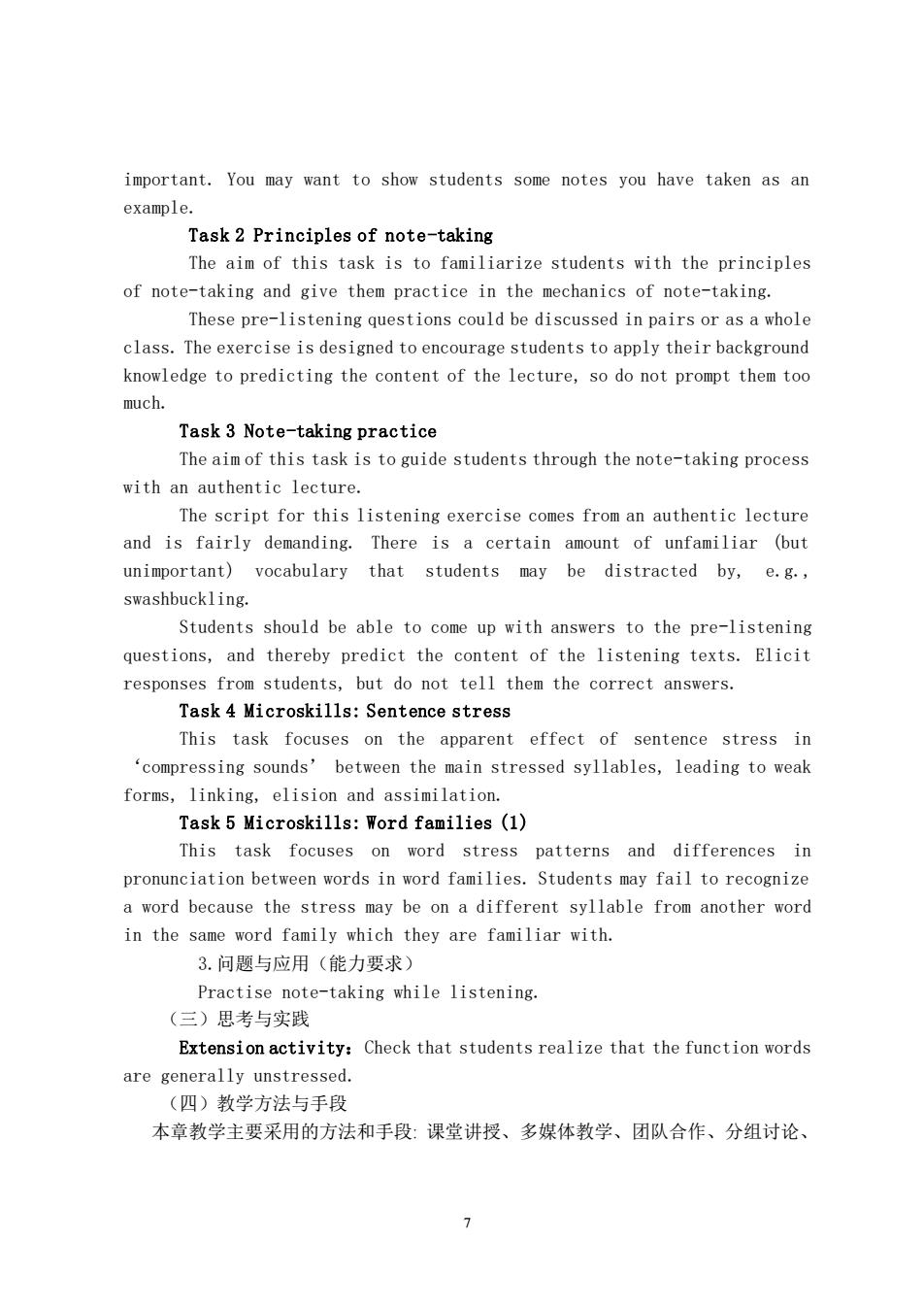正在加载图片...

important.You may want to show students some notes you have taken as an example. Task 2 Principles of note-taking The aim of this task is to familiarize students with the principles of note-taking and give them practice in the mechanics of note-taking. These pre-listening questions could be discussed in pairs or as a whole class.The exercise is designed to encourage students to apply their background knowledge to predicting the content of the lecture,so do not prompt them too much. Task 3 Note-taking practice The aim of this task is to guide students through the note-taking process with an authentic lecture. The script for this listening exercise comes from an authentic lecture and is fairly demanding.There is a certain amount of unfamiliar (but unimportant)vocabulary that students may be distracted by,e.g., swashbuckling. Students should be able to come up with answers to the pre-listening questions,and thereby predict the content of the listening texts.Elicit responses from students,but do not tell them the correct answers. Task 4 Microskills:Sentence stress This task focuses on the apparent effect of sentence stress in 'compressing sounds'between the main stressed syllables,leading to weak forms,linking,elision and assimilation. Task 5 Microskills:Word families (1) This task focuses on word stress patterns and differences in pronunciation between words in word families.Students may fail to recognize a word because the stress may be on a different syllable from another word in the same word family which they are familiar with. 3.问题与应用(能力要求) Practise note-taking while listening (三)思考与实践 Extension activity:Check that students realize that the function words are generally unstressed. (四)教学方法与手段 本章教学主要采用的方法和手段:课堂讲授、多媒体教学、团队合作、分组讨论、 7 important. You may want to show students some notes you have taken as an example. Task 2 Principles of note-taking The aim of this task is to familiarize students with the principles of note-taking and give them practice in the mechanics of note-taking. These pre-listening questions could be discussed in pairs or as a whole class. The exercise is designed to encourage students to apply their background knowledge to predicting the content of the lecture, so do not prompt them too much. Task 3 Note-taking practice The aim of this task is to guide students through the note-taking process with an authentic lecture. The script for this listening exercise comes from an authentic lecture and is fairly demanding. There is a certain amount of unfamiliar (but unimportant) vocabulary that students may be distracted by, e.g., swashbuckling. Students should be able to come up with answers to the pre-listening questions, and thereby predict the content of the listening texts. Elicit responses from students, but do not tell them the correct answers. Task 4 Microskills: Sentence stress This task focuses on the apparent effect of sentence stress in ‘compressing sounds’ between the main stressed syllables, leading to weak forms, linking, elision and assimilation. Task 5 Microskills: Word families (1) This task focuses on word stress patterns and differences in pronunciation between words in word families. Students may fail to recognize a word because the stress may be on a different syllable from another word in the same word family which they are familiar with. 3.问题与应用(能力要求) Practise note-taking while listening. (三)思考与实践 Extension activity:Check that students realize that the function words are generally unstressed. (四)教学方法与手段 本章教学主要采用的方法和手段: 课堂讲授、多媒体教学、团队合作、分组讨论